City Life is an apartment hotel
on Wellington’s Lambton Quay.
The yellow-leafed tree is
a ginkgo biloba.
I know nothing at all about
the white splotches on the wall.
These three images are selected from a number of shots I took in January 2008 but never bothered to do anything with. Now – eight years later – the neglect seems unwarranted.
The historic St John’s in the City (Presbyterian) stands on the intersection of Willis and Dixon Streets, Wellington. Registered by Heritage New Zealand as a Category I heritage building, it was designed by Thomas Turnbull, and opened on 11 December 1885 (go to Wikipedia link).
Lancewood, or horoeka, is a unique, small tree with lance-like foliage that changes dramatically as the tree matures. In fact, young trees are so different from adults that early botanists believed they were different species.
Yesterday, the last day of autumn … out in the city. And it’s a sunny afternoon. The camera doesn’t like being stuck in the bag; I can tell it wants to get out and play. So here – with a minimum of Photoshop time involved – are the results of my playing in the sunshine.
The orange flower spikes are sampled from the bed of Aloe vera just off Civic Square, behind the City Art Gallery, on the way down to Jack Ilott Green. “A member of the Liliacea family, Aloe vera is a succulent perennial, grows in a clump and has long, spiky, grey-green leaves. The yellow-orange tubular flowers bloom at the top of tall spikes that emerge from the center of the plant. There are approximately 400 species of Aloe, but it is the Aloe Barbadensis Miller, or “true aloe,” referred to as Aloe vera, that possesses the most remarkable healing properties” (from a web site called Way of the Wild Heart).
And the tall plant with the wonderfully curved blade-like leaves … is that some kind of Agave? (If you can identify it from my pix, please comment.)
The wooden wheel is part of the sculptural decoration on the City to Sea Bridge. I hadn’t been intending to stop on the bridge, but the silvery-blue light was just too appealing to ignore.
Back in the 1930s, the St John’s Bar and Restaurant used to be the home of the Wellington Free Ambulance. I mention it because the cabbage tree shown here is among a number outside the handsome Art Deco structure.
The images on Karen McRae’s blog make me gasp.
 There was a small taste of spring here before winter came back to to say its goodbyes. The cold and strong winds of a few days ago have fashioned some icy sculptures along the river’s edge and on this quiet morning a thin layer of fresh ice was singing and straining under the stirring of a waking river. Later today we are promised snow and the landscape will transform temporarily yet again. As much as I find these transformations fascinating and lovely to photograph, I think I am quite ready for real spring.
There was a small taste of spring here before winter came back to to say its goodbyes. The cold and strong winds of a few days ago have fashioned some icy sculptures along the river’s edge and on this quiet morning a thin layer of fresh ice was singing and straining under the stirring of a waking river. Later today we are promised snow and the landscape will transform temporarily yet again. As much as I find these transformations fascinating and lovely to photograph, I think I am quite ready for real spring. 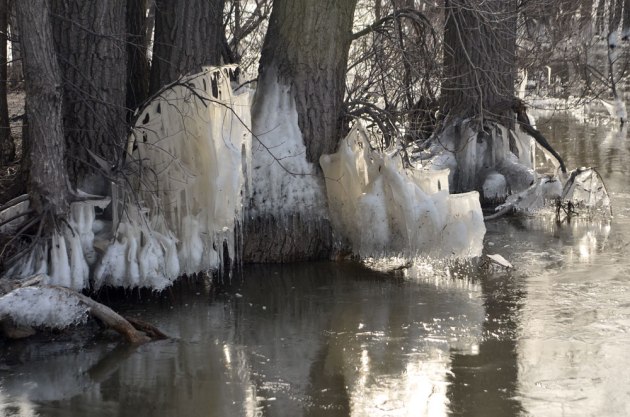
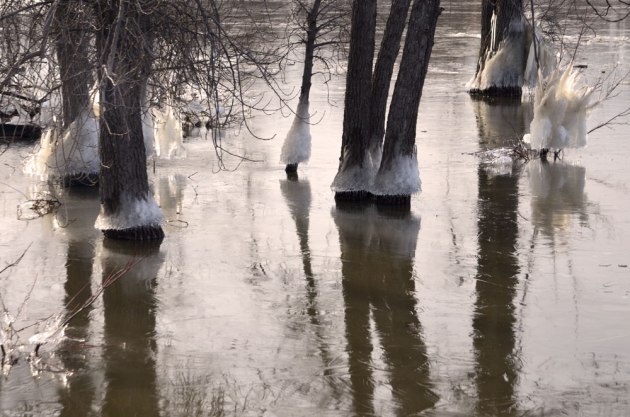
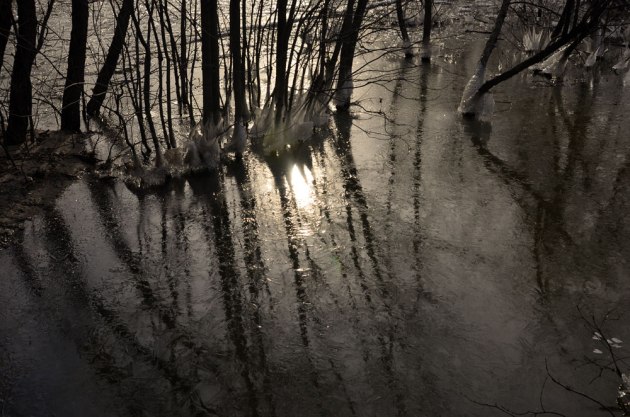
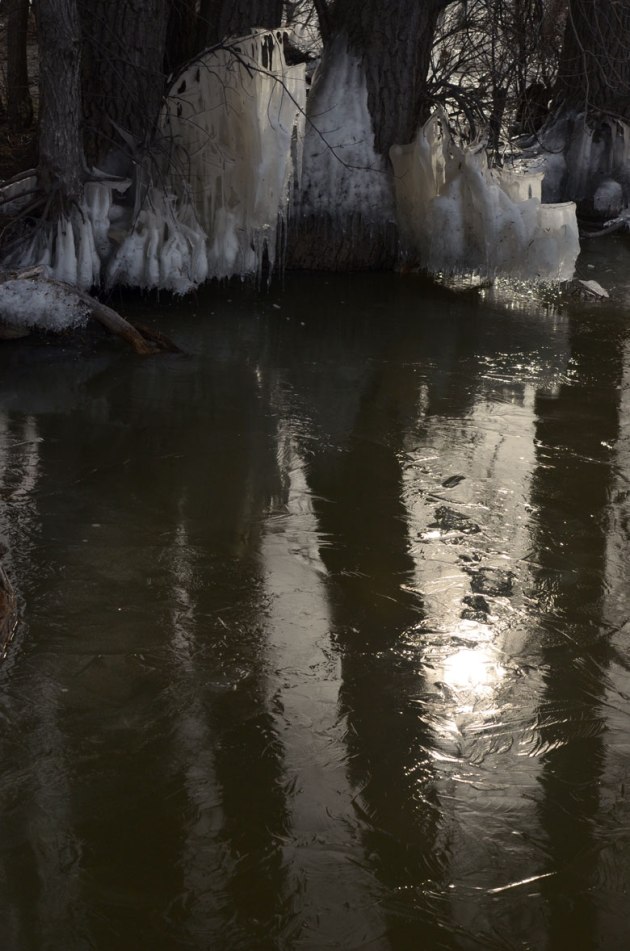

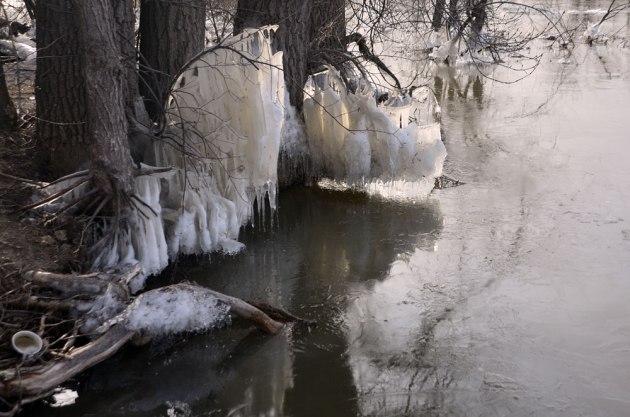
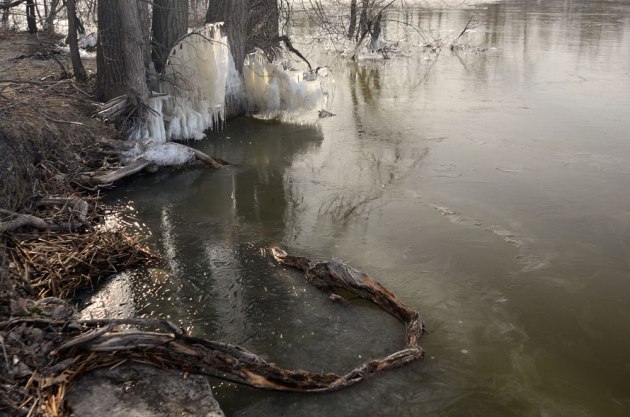 Above images: The Aftermath, April 06, 2016
Above images: The Aftermath, April 06, 2016
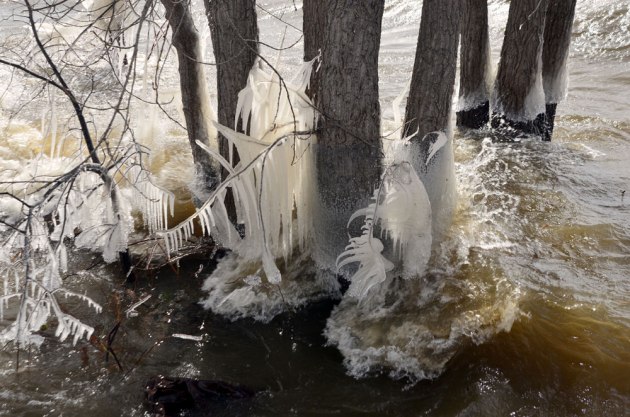 Above image : Wind & Waves, April 03,16.
Above image : Wind & Waves, April 03,16.
Below: click on image to open gallery view.
© Karen McRae, 2016
I wanted to write a nostalgic piece about the last ever Kirkcaldie’s Christmas Shop … but these photos I snapped on Sunday afternoon took the words right out of my mouth.
In June of this year, it was announced that “Troubled Wellington department store Kirkcaldie & Stains, affectionately known as Kirks, is poised to shut its doors next February.” Dating back to 1863, Kirks has been the capital city’s leading department store for generations, and is the oldest in the country still trading under its original name. The silver lining, according to Kirks chairman Falcon Clouston, is that the site would reopen as the first New Zealand store of Australian retailer David Jones, which aims to retain most of the 270 staff. (Adapted from a story by Catherine Harris, James Weir & Talia Shadwell (see Stuff link here))
Year by year, since I don’t remember when, I’ve been adding to my lovely collection of Christmas tree ornaments, and Kirkcaldie’s has been a major source. There’s also a lovely group of white plaster putti, and some elegant German glass (etched and cut), but that’s another story for another time.
It remains to be seen what David Jones will come up with next Christmas. In the meantime, the two red poinsettia flowers from the last ever Kirkcaldie’s Christmas shop look great on this year’s tree.
.
.
The shopping is done,
and the menu decided.
But which vase to use?
The prospect of dressing the table for dinner this evening sends me out to the front garden, where the camellias are beginning to flower. The weather has been showery and cold, but the wind has not yet burned the pink petals: there are enough good blooms for the vase … although it’s hard to hold the camera focus at close range.
Whatever happens …
Quite without effort,
words coalesce: the bright brooch
of significance.
A wisp, a whisper
of wistfulness, of wanting …
gritted teeth, desire.
Breathing empties me;
a single candle flickers,
sparks a forest-fire.
All futures blossom
on one ancient tree; sways still
the eternal dance.
(08 February 2015)
Today on |cross-ties| – the blog of “the other” – there’s an image of a fallen nīkau frond “from one of the palms in a paved area on the corner of Victoria and Manners Streets.” Having published the post, it occurred to me that there were, in my folder of unpublished images, one or two that might have been suitable for inclusion in that post.
Looking again, the older picture (taken at the same spot) seemed to prefer its own space.
“The nīkau (Rhopalostylis sapida) is a palm tree endemic to New Zealand, and the only palm native to New Zealand” (Wikipedia).
On a very busy 16 December 2014, I somehow managed to post this image on my Facebook page, together with the following text: “The Christmas tree went up about five days ago, and I’ve made several attempts at photographing it, but none of my shots are outstanding. I like this one, taken on 14 December 2014.”
Year by year, my ideas about my Christmas tree have evolved, and my collection of ornaments has grown. The majority are blown glass, but there are also items made from wood, paper, and cast plaster. And the tree itself is a cleverly woven cone of bamboo strips wound with a length of synthetic pine – something I’ve been able to re-use, year after year. Readers might recall my taste for eclectic, East-meets-West décor.
This year’s budget for new items is already over-subscribed, but I’ve a hankering for a few touches of gold to warm up the restrained palette I’ve favoured over the past few years.
PS: Here’s a nice Better Homes and Gardens video about decorating Christmas trees.